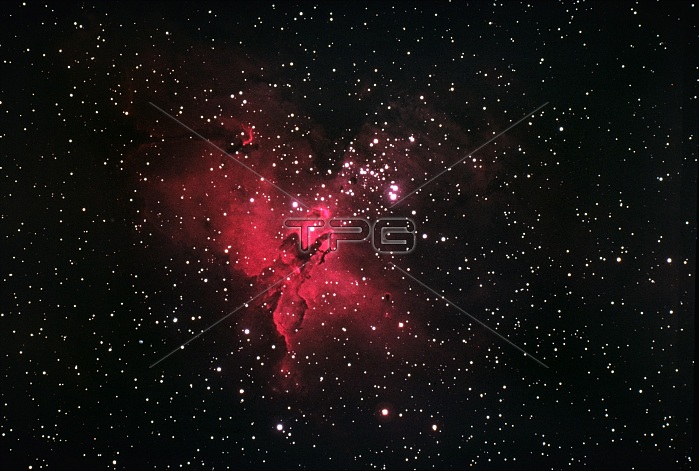
The Eagle Nebula as seen by the Kitt Peak 4-meter Mayall telescope, 1973. Image shows the emission nebula and its associated galactic star cluster in the constellation of Serpens. M16 is an example of a galactic HII region, which is to say that most of the emission comes from the red light of ionized hydrogen gas. The nebula shines because of the energy provided by the cluster of hot blue and white stars. These stars are about two million years old, which is quite young for a star. The brightest stars are concentrated toward the north-west (the top right of this picture). M16 is in a late stage of its evolution, where the hot stars have blown away the closer material and now shine in a cavity surrounded by an expanding complex of neutral lumps, which show bright edges due to shock waves created as the outwardly flowing material hits other gas. M16 also contains many small black globules, which are believed to be compact dust clouds on their way to collapsing into proto-stellar objects, and then later into new stars.
| px | px | dpi | = | cm | x | cm | = | MB |
Details
Creative#:
TOP22315789
Source:
達志影像
Authorization Type:
RM
Release Information:
須由TPG 完整授權
Model Release:
N/A
Property Release:
No
Right to Privacy:
No
Same folder images:

 Loading
Loading